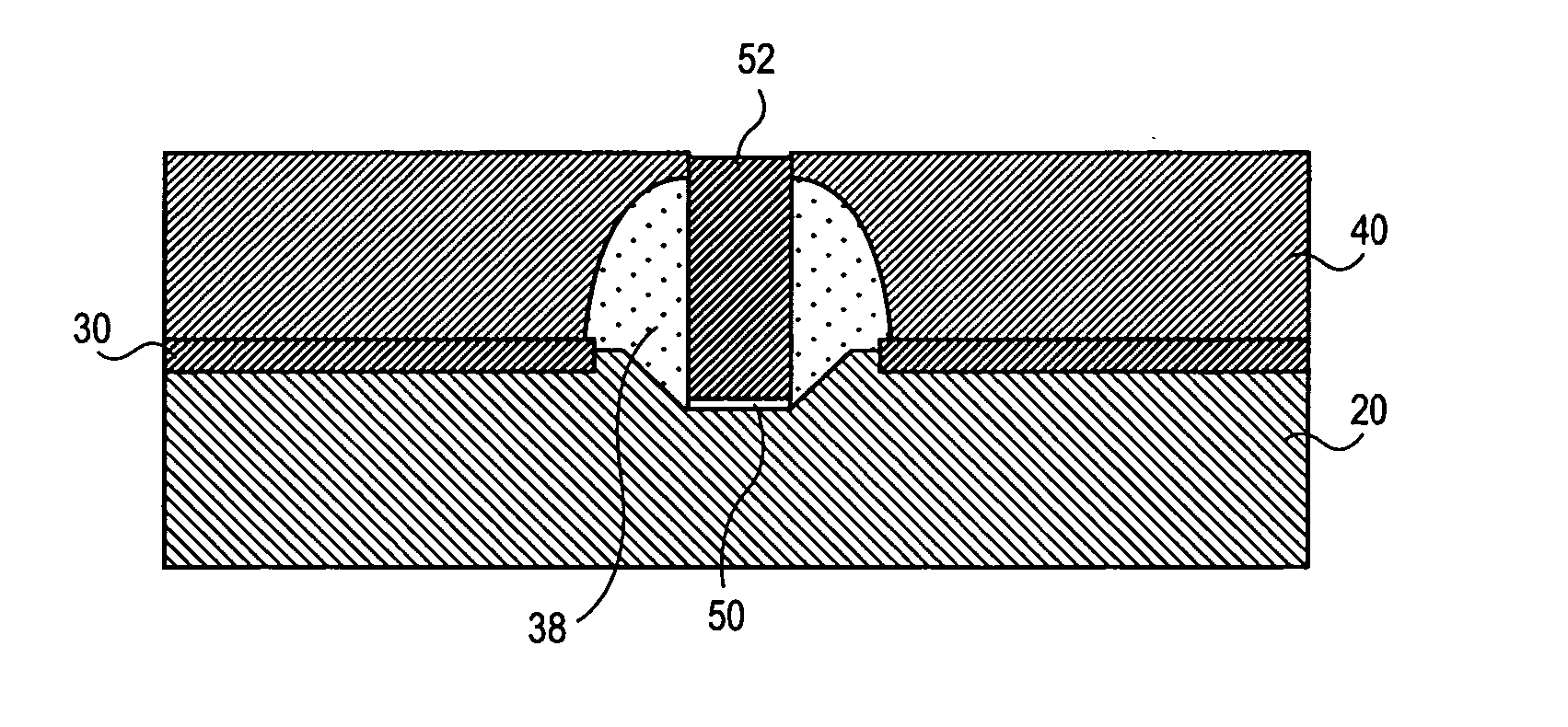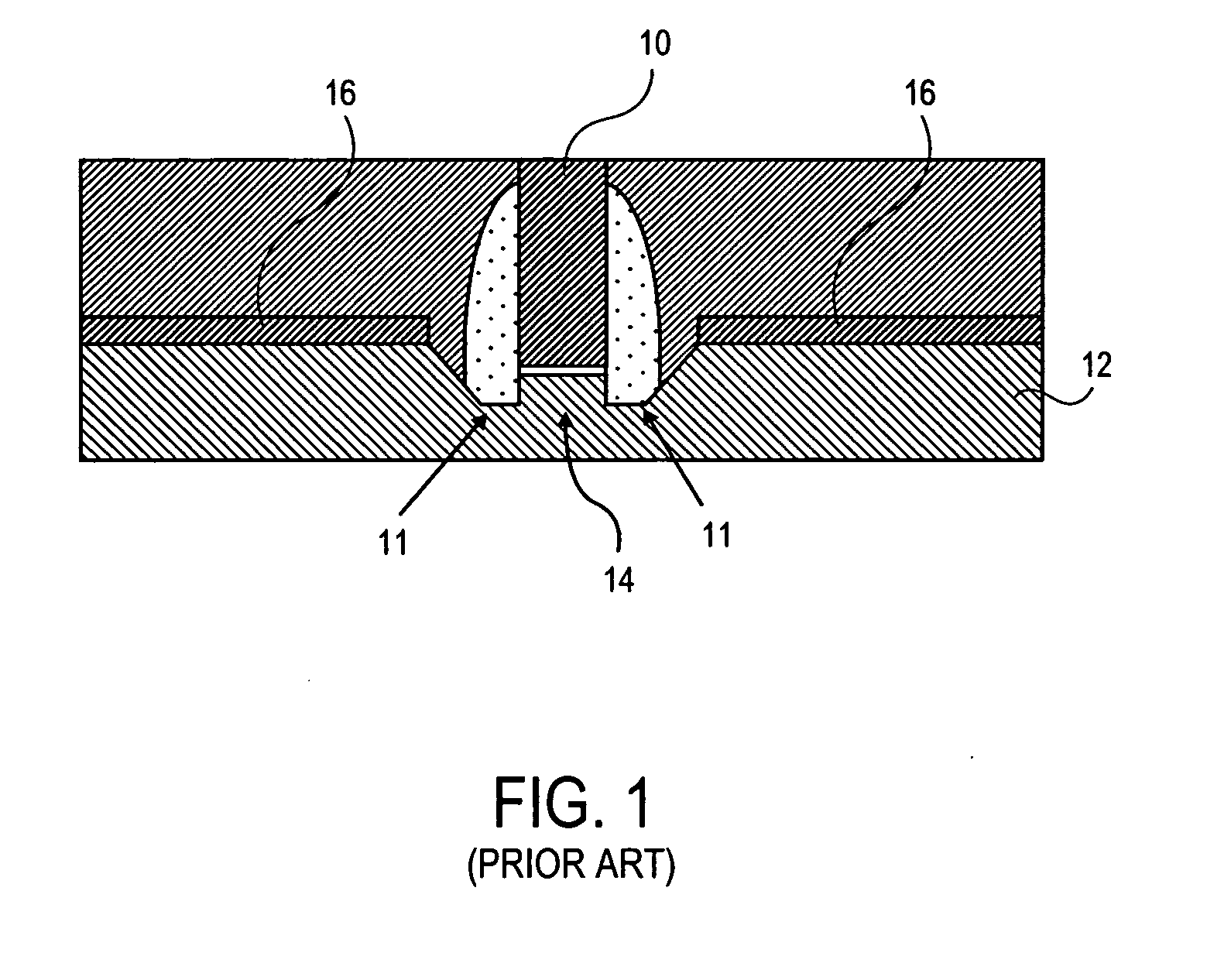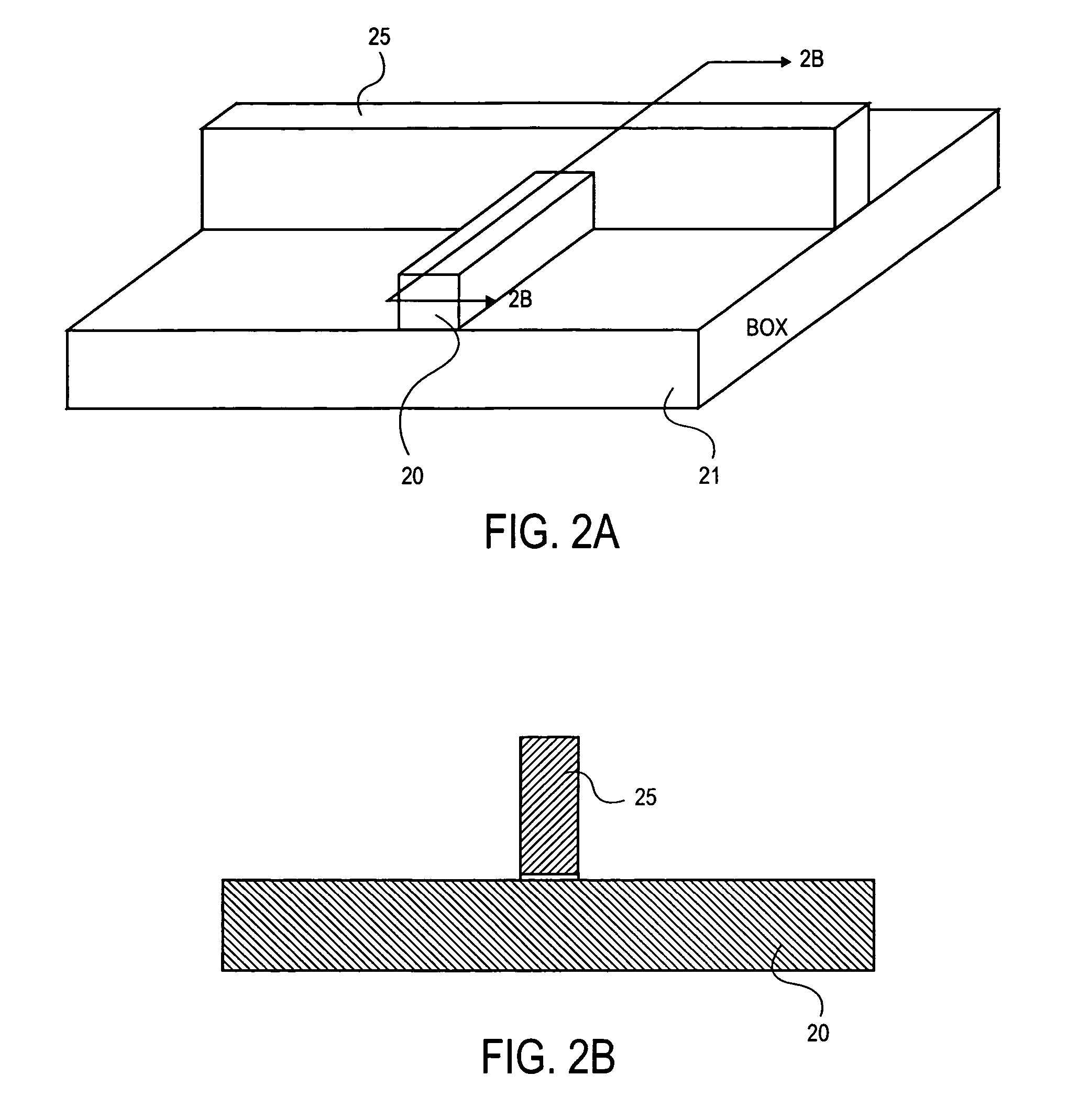Method and structure for reducing the external resistance of a three-dimensional transistor through use of epitaxial layers
a three-dimensional transistor and epitaxial layer technology, applied in the field of semiconductor processing of transistors, can solve the problems of limited cross-sectional area, high external resistance, and high external resistan
- Summary
- Abstract
- Description
- Claims
- Application Information
AI Technical Summary
Problems solved by technology
Method used
Image
Examples
Embodiment Construction
[0012] A process for fabricating CMOS field-effect transistors and the resultant transistors are described. In the following description, numerous specific details are set forth, such as specific dimensions and chemical regimes, in order to provide a thorough understanding of the present invention. It will be apparent to one skilled in the art that the present invention may be practiced without these specific details. In other instances, well-known processing steps, such as cleaning steps, are not described in detail, in order to not unnecessarily obscure the present invention.
[0013] A problem associated with small body transistors is illustrated in FIG. 1. A gate structure 10 is shown traversing a semiconductor body 12 at a channel region 14 of a transistor having source / drain regions 16. The semiconductor body or fin is thinned at the gate edges 11. This thinning is the result of processing used for defining the body, forming spacers, and cleaning of oxides. This processing can r...
PUM
 Login to View More
Login to View More Abstract
Description
Claims
Application Information
 Login to View More
Login to View More - R&D
- Intellectual Property
- Life Sciences
- Materials
- Tech Scout
- Unparalleled Data Quality
- Higher Quality Content
- 60% Fewer Hallucinations
Browse by: Latest US Patents, China's latest patents, Technical Efficacy Thesaurus, Application Domain, Technology Topic, Popular Technical Reports.
© 2025 PatSnap. All rights reserved.Legal|Privacy policy|Modern Slavery Act Transparency Statement|Sitemap|About US| Contact US: help@patsnap.com



